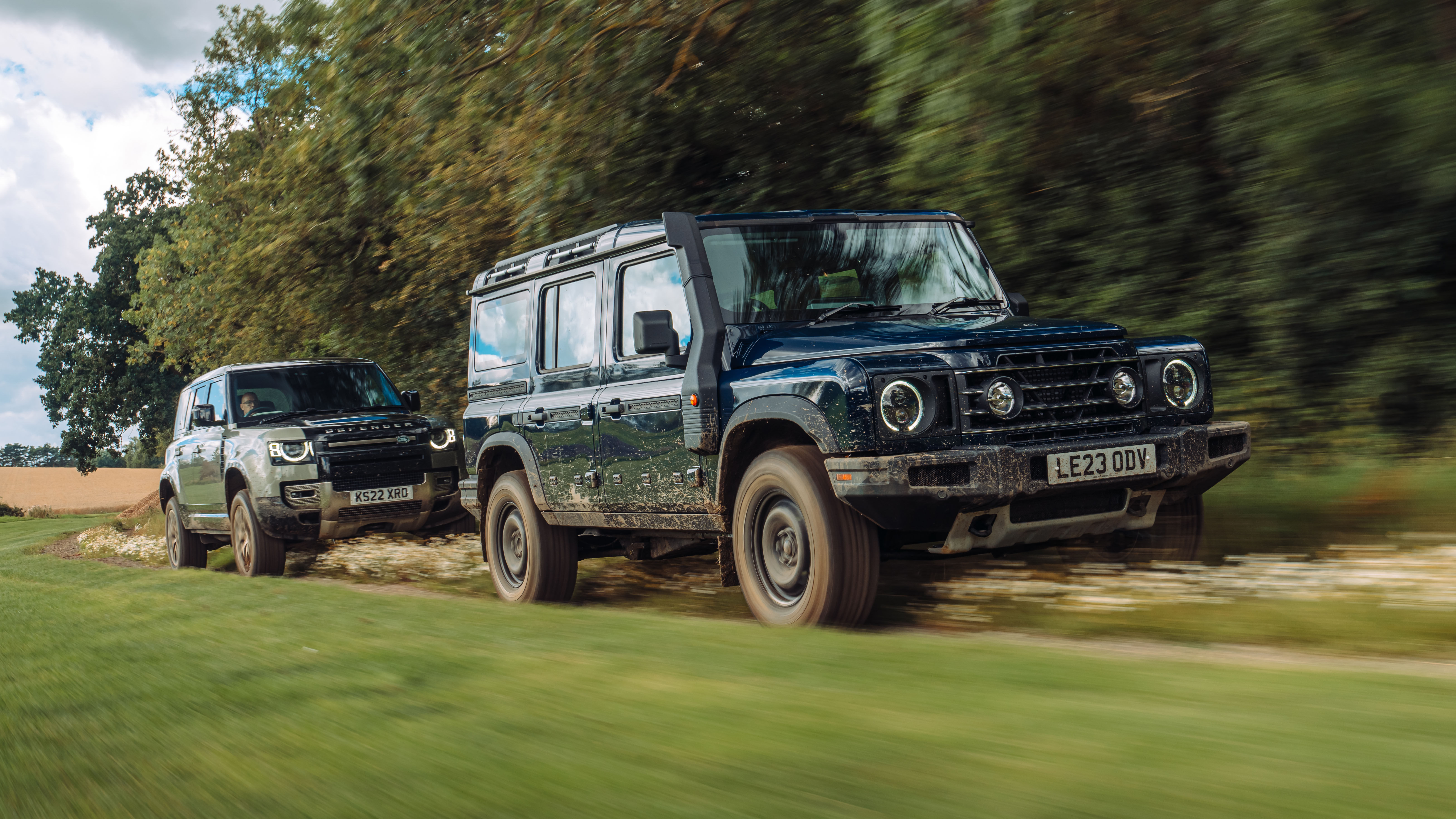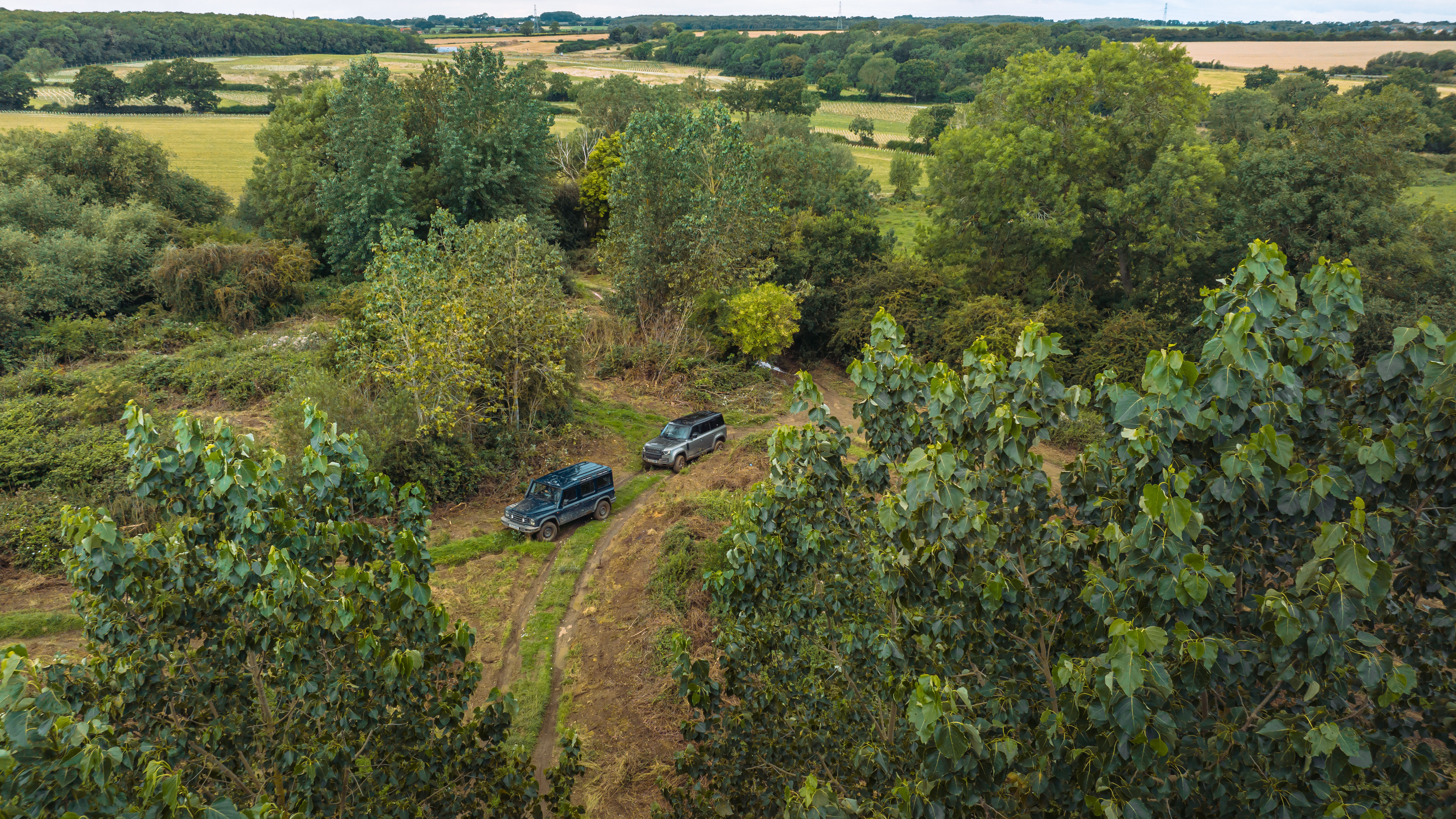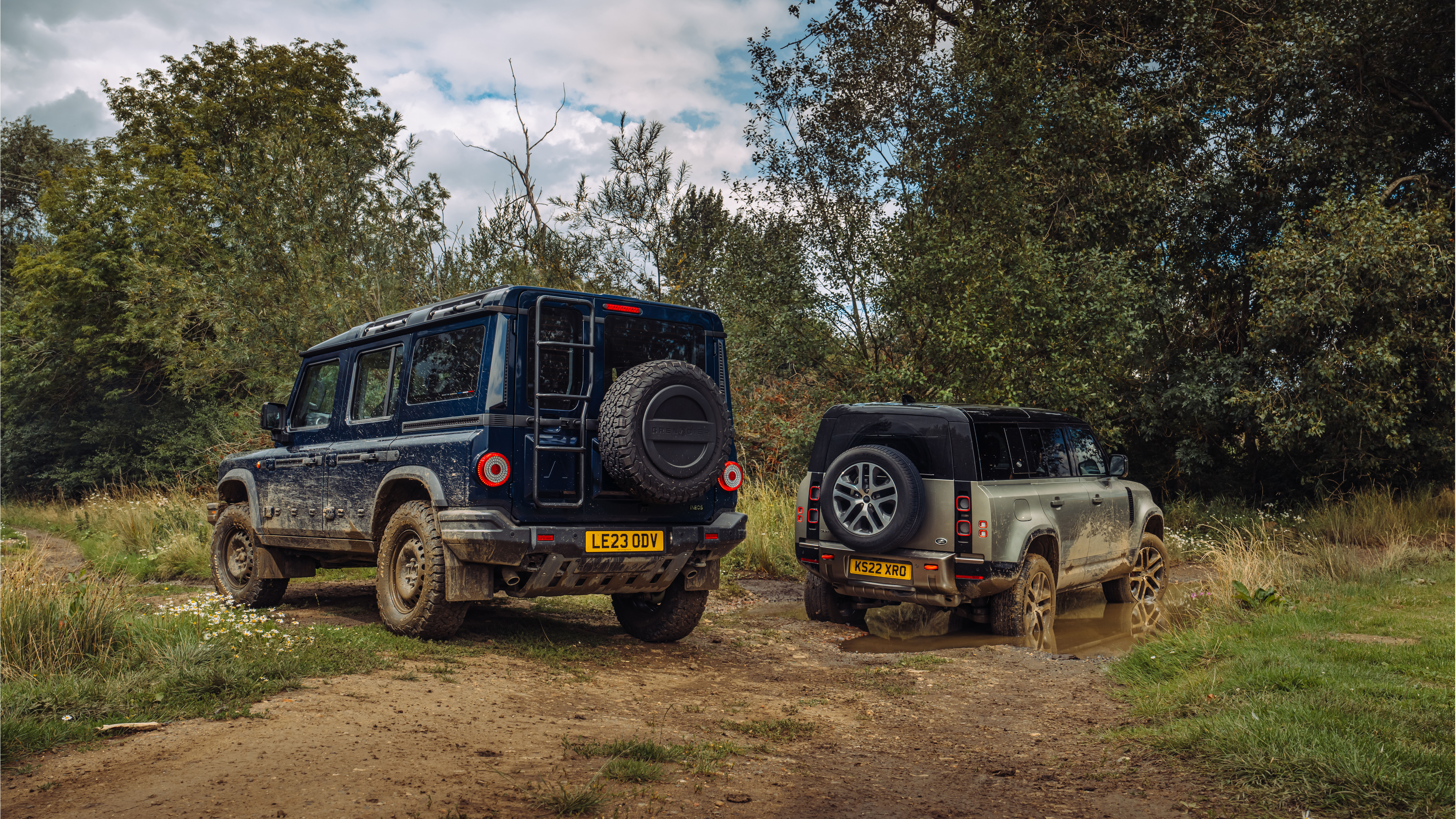
The big boxy 4x4 test: Land Rover Defender vs Ineos Grenadier
Some people think the Land Rover Defender went too soft when it was dragged into the 21st century. Those people will want an Ineos then, right?
Want to know the real result of this test? Come back in 15 years. Because what Ineos needs above all else is a reputation for durability and robustness. And you can’t earn one of those overnight. A name for solidity and dependability would offset many of the coming criticisms, the price first among them.
When the team behind Ineos first went into this, I’m sure they weren’t thinking “Yeah, a £76k starting price is where we want to be”. But that’s where it’s ended up. More expensive than a new Defender for a car that’s doing no more than mimicking the old one. Tough sell. Land Rover worked out that its audience had moved on and pursued a different path with the new Defender. Well, not a new path, the same well trodden one it had forced the Discovery, Range Rover Sport et al down already. Yet another chunky seven-seat SUV selling to the same affluent, largely urban buyers. This one just had squarer edges.
So how different are these two? How similar? And next to Land Rover’s rampant self-cannibalisation, is Ineos on to something? It’s targeting a more niche buyer, the kind with an affinity for rural pursuits rather than actual agrics. They’re now wedded to their rugged, basic, VAT free pickups and quad bikes. But there’s another audience: the disillusioned Defender buyer. There are plenty out there, for whom the new Defender is too prissy and precious, has moved far too far from its roots. Their prayers have been heard.
Photography: Mark Riccioni
Because I’ll tell you what, if you drive an old Defender, you’re going to love this. It’s your car, done better. Steel ladder frame chassis, none of that poncey air suspension, diesel engine with twin turbos, proper locking diffs, low ratio gearbox operated by a proper lever. It’s all the stuff you love, plus a suitably bizarre driving position that bends your left leg to 90° while putting your right out straight. Blame the floor pan. Same for your elbows. If you want to rest them, the right goes up and forwards, the left down and back. It gives you this weird canted driving position.
The physical controls in here are done well, logically laid out, big enough to hit and satisfying when you do. We wish there was more reason to interact with the roof panel (it’s mainly switches for auxiliary electric fittings such as light bars and winches). All information bar warning lights is contained in the central screen. Cost saving. The weirdest quirk is there’s no built-in satnav. Full phone connectivity is available, but that’s not the point. The Grenadier is designed to get off-grid, beyond the reach of phone masts and 4G. And yet once beyond the tarmac, it has no means of finding its way. It’s a daft oversight. Ineos could have tried something unique and new, with global topography and trails built in. Instead, bring your Garmin.
The Defender is much more comfortable: softer touch furnishings, superior seats, more padded surfaces, smarter throughout. It’s not a commercial vehicle in any way, shape or form. This is smart, luxurious transport with a feelgood edge. Lots of useful features and storage, comfy for kids in the back, fewer hard edges to hurt themselves on, more care given. It’s family transport that uses grab handles to tease that it could do more. The boot of this P400e version reveals the compromise – an awkward raised floor to cover the hybrid system.
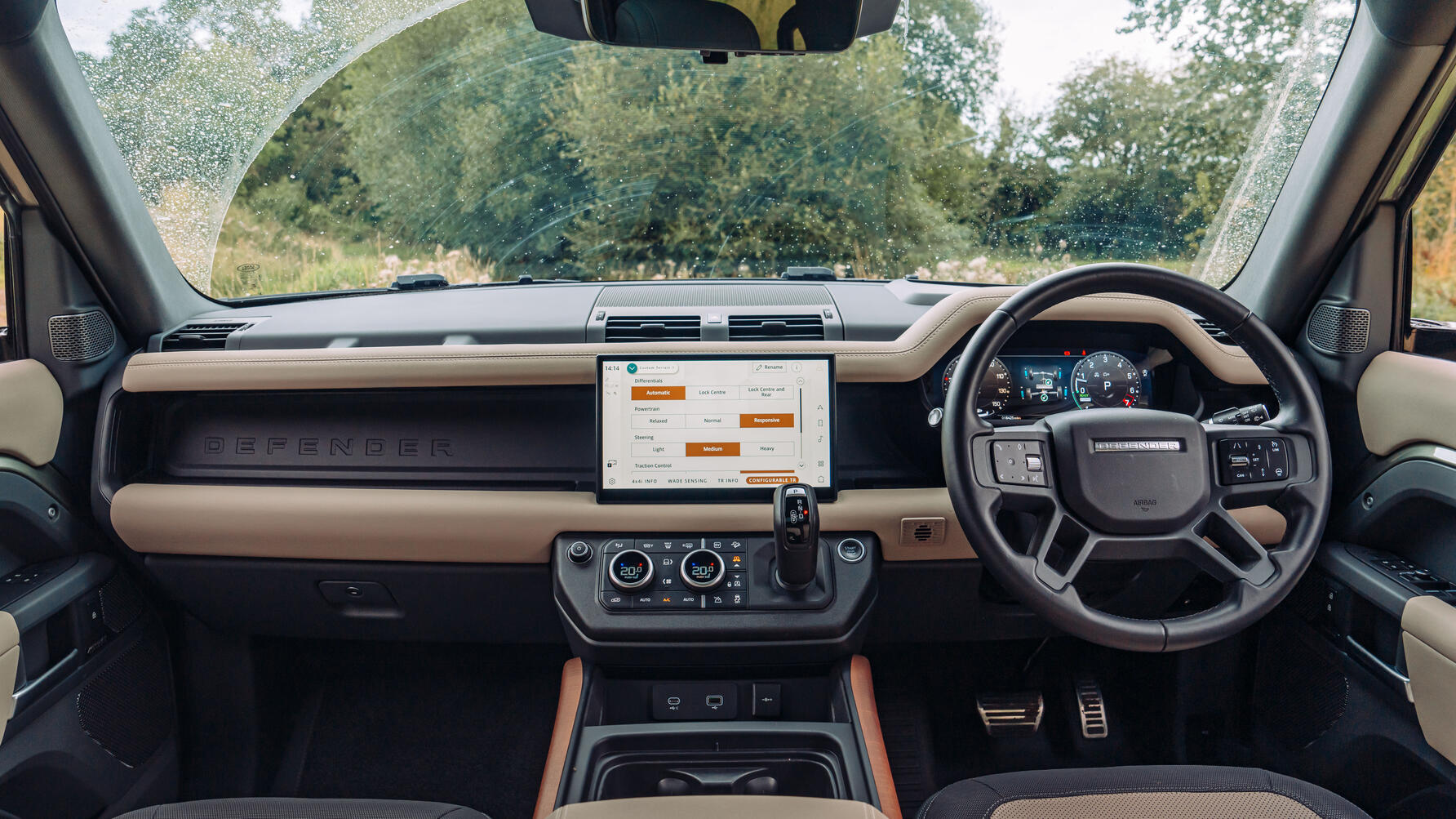
The Grenadier is bigger in the back, but the left door, which has to be opened first, is too small. You have to open both. Minor hassle. If they’d readjusted the proportions we’d have been complaining about rear visibility. A bigger issue for many is that HMRC sees the Grenadier as a car, not a commercial vehicle. Its payload is less than a tonne, so it’s not VAT exempt like all those leaf sprung pickups. It does, however, ride and drive better than they do. Just not nearly as well as the Land Rover. It’s a matter of civility. The more time you spend with a Defender, the more you come to realise just what a great piece of engineering it is. The bandwidth it offers is extraordinary. Cross-continental drives are no issue. It’s (just about) wieldy enough in towns. It’s actually quite fun to drive (if you have a 90) and what it can do off-road is genuinely extraordinary.
You know how we regularly criticise supercars for becoming too competent? For prizing speed and control over interaction? Move that into the off-road realm and you can say the same of the Defender. It makes things too easy. It does everything for you. You don’t need to know what a differential is or what low range does, its electrical brain has already made the decisions, done what it needs to do, your progress is unimpeded. And in this hybrid, you can pick your way over the terrain silently. It's an unexpectedly pleasing facet.
The Grenadier is more clanking and connected. The beam axles make it feel heavier on the road, and off-road it requires a level of knowledge to know what levers to shift when. It’s more involving, you get more feedback from it, on-road the signals are more... wayward.
Top Gear
Newsletter
Thank you for subscribing to our newsletter. Look out for your regular round-up of news, reviews and offers in your inbox.
Get all the latest news, reviews and exclusives, direct to your inbox.
First and foremost the Grenadier is a 4x4, that’s its area of excellence. On tarmac it’s better at covering distance than we expected, but you have to put up with much more noise, texture and vibration. The ride on those live axles is lumpy, but not harsh. It thumps and bangs around a bit over potholes, but what everyone talks about is the steering. A recirculating ball system helps to reduce kickback in the rough. Land Rover has managed to do that with a much more direct and precise rack and pinion set-up.
The Grenadier needs armfuls of lock and doesn’t self-centre. It’s unnerving at first – you get used to it, but then the issue is telling when the wheels are pointing straight, and that’s hard to do with peripheral vision on the two-spoke steering wheel. It looks pretty much the same whichever way up.
Trying to keep the Grenadier pointing straight is an exercise in weave reduction, but while doing this you have a realisation. Although it looks like a Defender, it feels like something else... a Mercedes G-Class. And there’s a reason for that. The Grenadier was largely engineered and developed by Magna, who also did the... you get the picture.
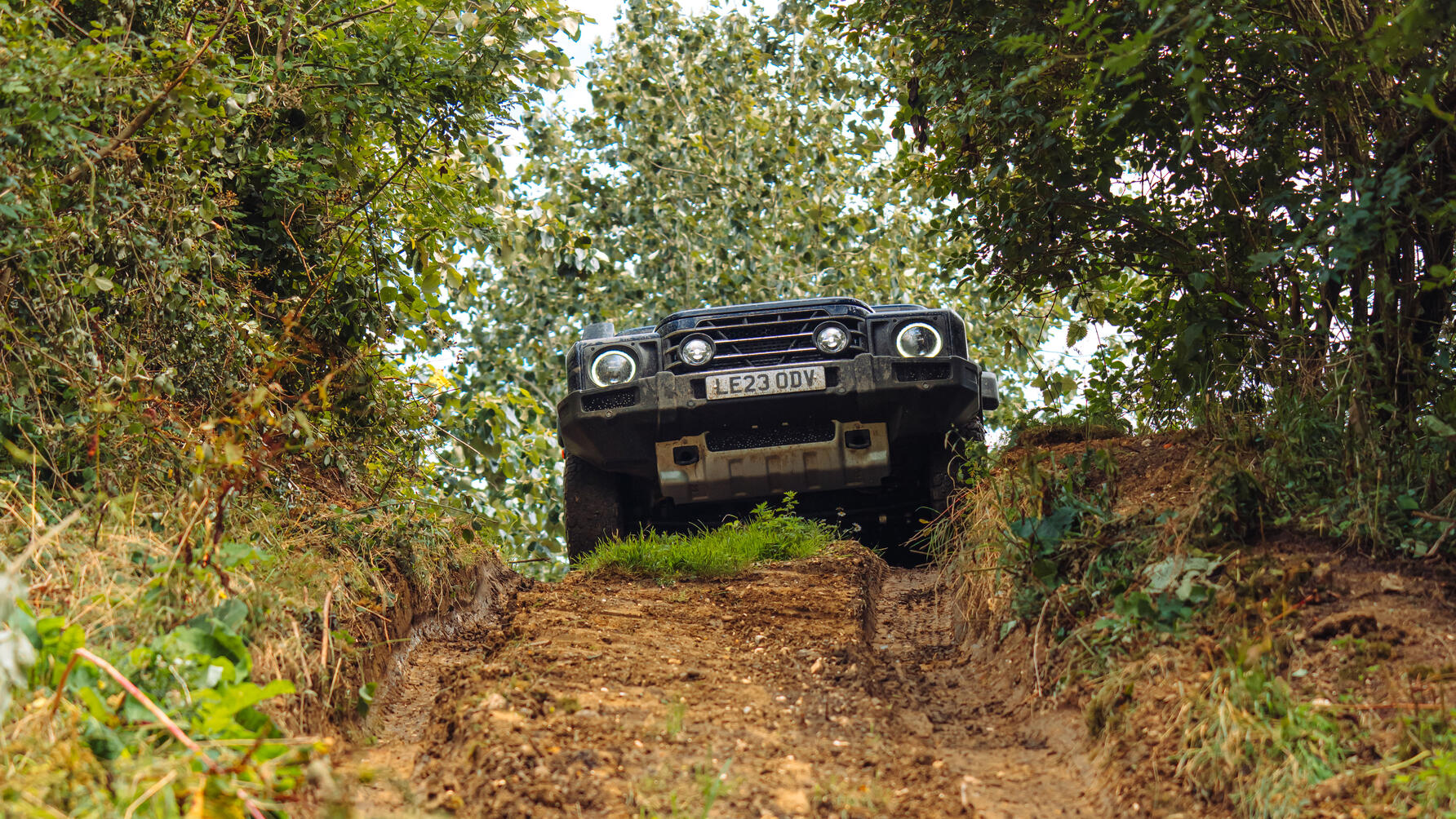
It’s less luxurious and refined of course, but if Merc did a basic stripped out diesel G and you squinted a bit, you would sense the similarities. Assistance has also come from BMW, which has supplied the engines: a choice of 3.0-litre single turbo petrol or this 245bhp/406lb ft twin-turbo diesel. The strengths of this engine are very well known – not only the most powerful of its kind, but also the most efficient. Just not in the Grenadier.
Boy oh boy, does it chunk through fuel. Just 24mpg on a 70mph motorway run, dropping to an overall average of 19mpg. An X5 wouldn’t be far off double that in similar driving. The CO2 emissions stand at 310g/km. There’s clearly even more mechanical drag from the 4WD than from the paving slab aero. Alongside it this P400e plug-in Defender is entirely virtuous. It’ll do 25 miles on electric power alone and once that’s gone the 2.0-litre turbo petrol is easily good for 30mpg. It’s much swifter and more refined, but still doesn’t have a diesel’s reassuring grit and gumption. If you want a workhorse, that’s still the way to go.
For life’s general tasks, the Grenadier can’t hold a candle to the Defender. You’ll get places more quickly, with far greater ease and less fuel used in the Land Rover. Off-road the story is more nuanced. In terms of capability they’re pretty evenly matched. You get more feedback from the Grenadier, but you’ll probably only go further in it because it conveys the sense of being more rugged, less concerned about scratches and dings. They are very different cars, barely rivals at all in some ways.
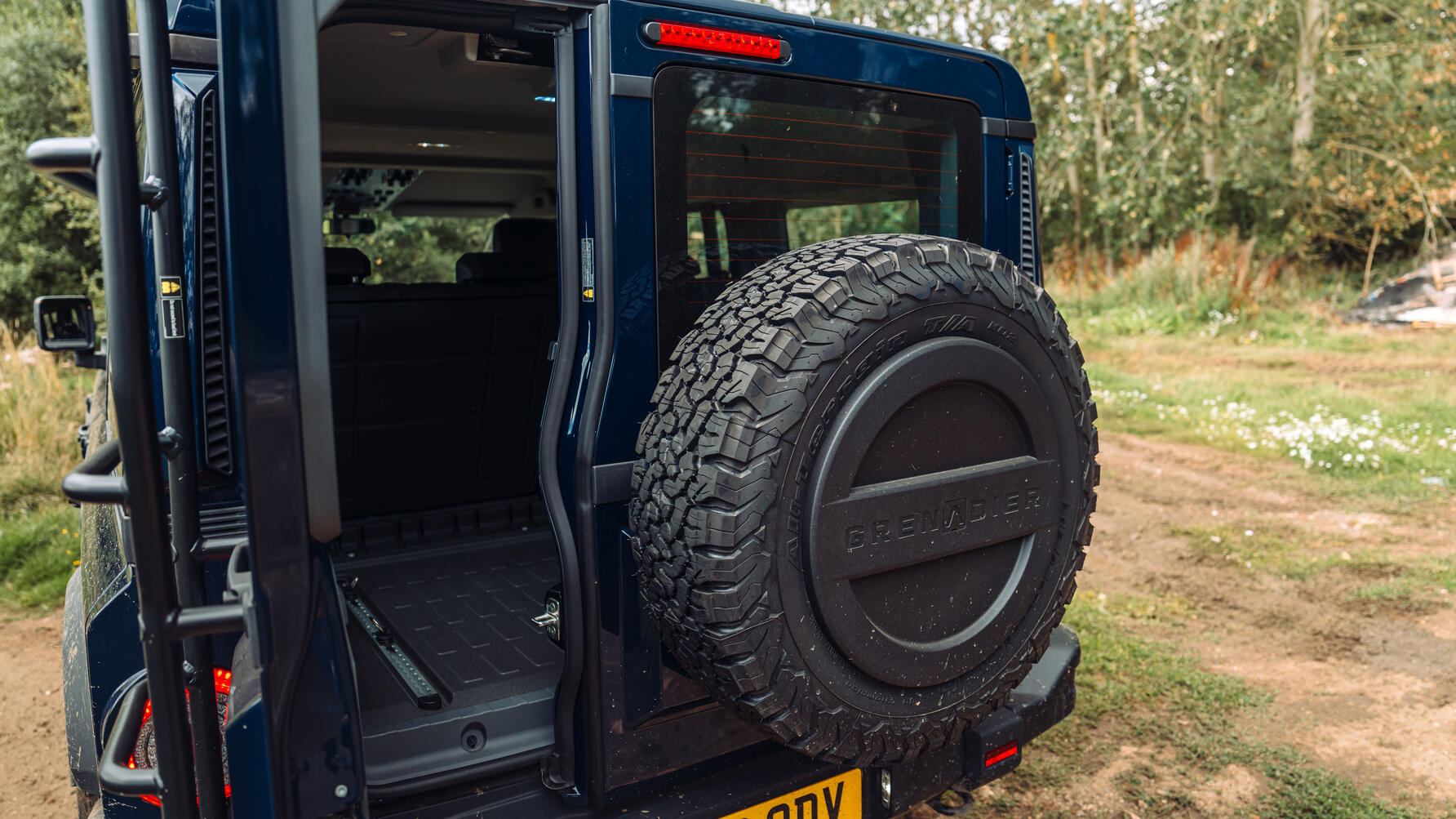
Consider the Defender’s equipment and technology, its hybrid system and design. Now look at the Grenadier. It doesn’t even have electric wing mirrors as standard. It’s £76,000. The hybrid Defender complete with 14-way adjustable leather seats, Meridian audio and all the rest, costs less than £4,000 more. I feel for Ineos – when the Grenadier was announced two years ago prices were meant to start at £48,000, with this Station Wagon around five grand more. There’s been a very rude awakening somewhere.
Nevertheless, this is an accurately targeted car for its particular audience. It comes across as a truck built for an adventure. What’s puzzling is that in focusing so hard on replacing the old Defender, Ineos appears to have forgotten there’s another firm out there building the world’s toughest, most durable and hardwearing cars: Toyota. The new Land Cruiser, expected next year, is the car Ineos needs to be most fearful of.
The next few years will be testing for this all new brand, so let’s throw it a bone: if we had to pick one of these two to go for a romp through the Gobi or tackle the Skeleton Coast, we’d take the Grenadier over the Defender. It’s a question of mechanics versus electrics. And on this evidence we also have to say the Grenadier feels genuinely strong and capable, a car that will cope. The reputation for reliability starts here.
1: Land Rover Defender 9/10
Might come across as an urbanite fake alongside the Grenadier, but still has all the right moves on and off-road.
2: Ineos Grenadier 7/10
Capable and, crucially, likeable off-roader. Not without flaws, but tough and robust. No reason so far to doubt its longevity
Trending this week
- Car Review
BMW 1 Series




